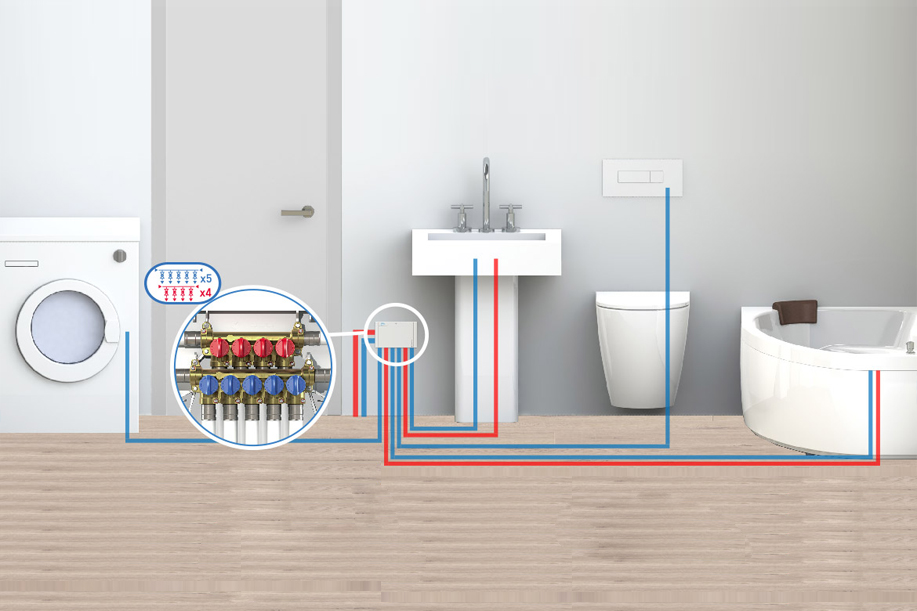Electrical systems, especially when installed in some areas of the house that are more humid, deserve a little more care.

The rules governing the implementation of electrical and thermo-sanitary systems, consider bathrooms as one of the riskiest areas where to build and install an electrical system. As a matter of fact, this area of the house comes very often in contact with water, steam (think, for example, to the water steam generated by the hot water that is used to have a shower) and humidity. For this reason, the bathroom of a house may become a place where short circuits are generated.
To increase the effectiveness of the electrical system of a bathroom or of any other humid area of the house, professionals of the energy industry are constantly informed with the new updates they have to implement when installing new electrical systems in such critical areas to guarantee total safety for the house inhabitants.
One of the first things to do to make sure that you design an electrical system that is compliant with the regulations is that you do not have to take for granted the basic rules for the safety of the system itself. As a matter of fact, anyone who designs an electrical system in humid areas, such as in a bathroom, must think of installing the earthing, as well as, of installing the life-saving device with the corresponding magneto-thermal protection. Obviously, the earthing has a preventive function. It avoids short circuits or fires, but above all, it defends older appliances with particularly worn insulation systems.
But the question we should ask ourselves is: how shall we design an electrical system that complies with the standards of the most humid areas of a house? In the following paragraphs, we will see what are the steps to follow to safely and efficiently install an electrical system
How to safely plan the design of an electrical system in a bathroom
First of all, we have to bear in mind the basic rules that must be observed when planning an electrical system. Let’s try to get into more practical details. Listed above are some simple tips that you can follow to install a safe and efficient electrical system.
- The first suggestion is to install a number of sockets that must be consistent with the number of devices that are usually used in the bathroom. The reason for this lies in the fact that when using several devices on the same socket, this increases the risk of current overload and, consequently, of short circuits. Therefore, experts in the field of electricity suggest using only one device per socket.
- To make the system safer, it is appropriate to position the sockets at a minimum distance from the ground (usually fixed at 110 cm), from the shower box and/or the bathtub.
- After having positioned the sockets, you must determine where to place the switches: for this purpose, it will be necessary to rely on a specialized technician, who will issue a certificate of conformity of the system at the end of the job (unless he finds any discrepancies).
It is important to point out that current regulations require the bathroom to be divided into 4 main zones, as it follows:
- Zone 0, where the bathtub or shower are located;
- Zone 1, which extends to a height of 2.25 meters on the vertical surface of Zone 0;
- Zone 2, which is located between Zone 1 and a parallel vertical surface of 2.25 meters high and 0.6 meters far;
- finally, Zone 3, located between Zone 2 and a parallel vertical surface that delimits it externally.
Safety in the bathroom: arrangement of electrical sockets
We have seen how, before designing an electrical system, a bathroom must be divided into different areas, as required by law. Let’s now have a look at how and where to place the sockets or other electrical devices:
- in Zone 0 it is forbidden to install any device, whether it is an electrical conduit or a diversion box;
- in Zone 1, only very low voltage SELV (Safety Extra Low Voltage) devices (which must not exceed 12 V) may be installed, provided that their source is located outside Zone 1;
- in Zone 2, plug sockets may be installed, provided they are equipped with class II transformers. These are, in other words, shaver sockets that are usually installed close to the mirror;
- in Zone 3 you can freely install any type of plug socket.
Nevertheless, it is important to point out how that these devices must be equipped with SELV power supply and other additional protections, beyond being equipped with individual electrical protective separation. This will allow, if not avoid, at least limit, possible short circuits, which nowadays represent one of the most dangerous events in domestic environments.
